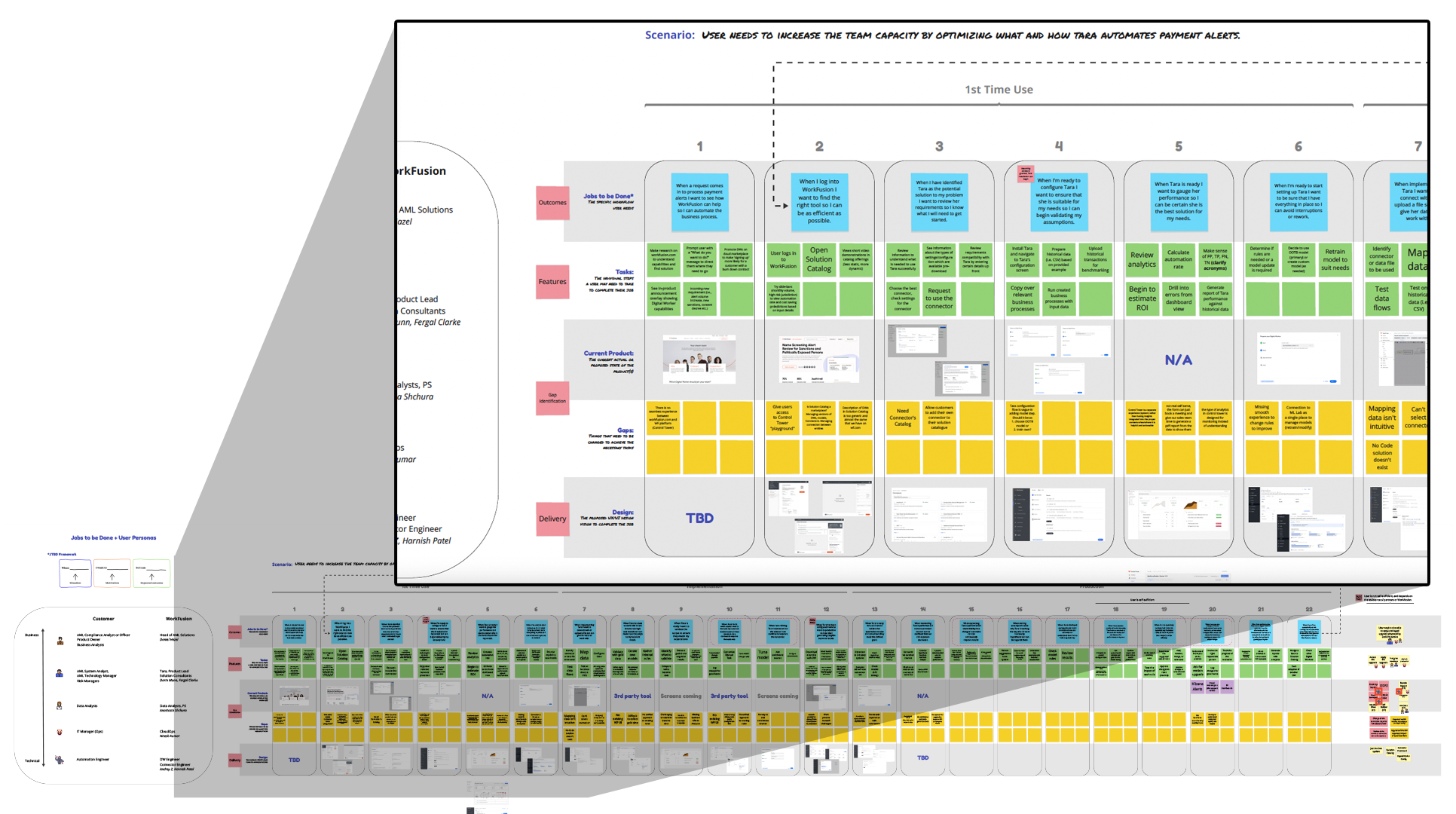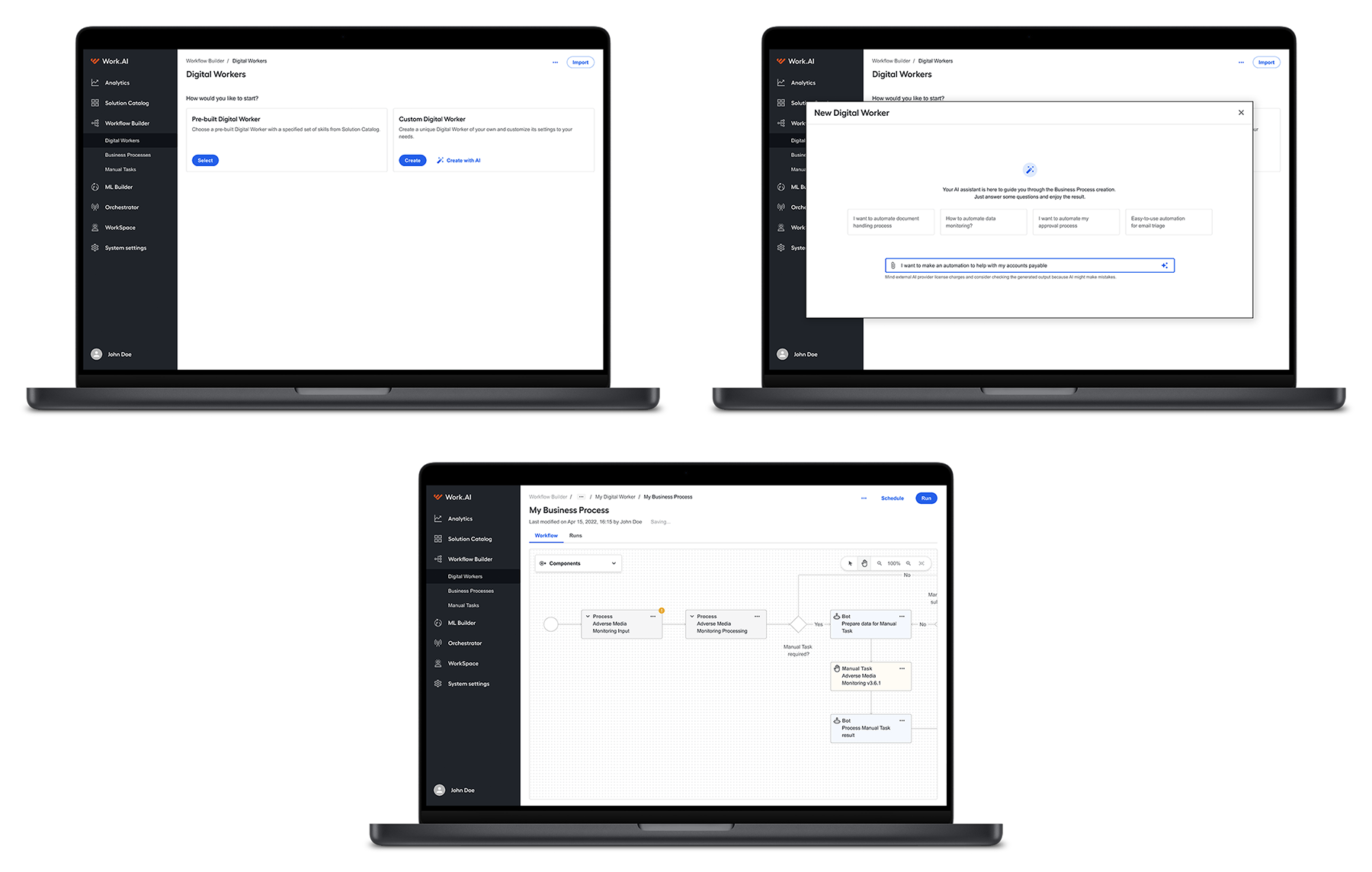Goal
Customer problems are defined and clearly articulated so the product team knows precisely what needs to be solved and is confident in the delivery of meaningful solutions.

Opportunity
Redesign the product planning and prioritization process to be more responsive to customer needs and end-user-focused to:
- Be more targeted in where and how limited design resources are utilized to maximize efficiency.
- Invite the entire product team to understand how to be more focused on solving customer problems instead of our own.
- Build a data and feedback-driven culture where empathy for end-users drives decision-making.
- Remove boundaries between functions so that collaboration fuels planning and prioritization.


Solution
Faced with an organizational culture of low design maturity, I had to solve several problems simultaneously. First, I had to build support and respect for the design team, which I started by mandating UX feature and release sign-offs as well as equal status for all designers at the scrum team level. Second, I became the de facto voice of the customer in all planning and prioritization discussions, moving the conversation from what was simply feasible to what was desirable for users. Third, I introduced customer feedback and product instrumentation as critical data points for all product decisions. Finally, I worked to correct the lack of understanding of design’s role in a mature product organization through a series of workshops and educational sessions.


Outcomes
- Accelerated UX team delivery velocity by 50% in a single release by removing unnecessary process roadblocks and embedding individual designers within specific feature teams.
- Introduced numerous customer outreach activities and feedback mechanisms where none existed, including instituting a UX Customer Advisory Board that increased user engagement and satisfaction scores 25% above initial KPI targets.
- Instituted product analytics instrumentation, giving important insight into user environments, feature usage, and new workflow adoption, helping to make better-informed backlog prioritization decisions.
- Absorbed the technical product documentation team supporting the launch of an updated customer documentation portal and experience and enabling the rollout of in-product walkthroughs and user guides.


What I learned
- Organizational design maturity must be a realistic shared reality. Hiring a chief UX person to solve all your UX problems is not a solution; it’s a pipe dream. Usability challenges in your product aren’t (solely) indicative of a lack of design leadership. It indicates a culture that does not effectively integrate end-user insights into the product development process. Effective communication is, more than just about anything, what delivers superior products to customers.
- Don’t dwell on the mistakes of the past if you want to build a better product in the future. Excuses for the current state of a product are useless. Poor integrations, lack of front-end development skills, antiquated UI technologies, none of those problems are unique. The important thing is not what got you where you are. Instead, the team needs to intrinsically understand where they need to go. UX can be a confessional sometimes, but penance is useless. Action and vision are what’s required in these situations.
- Relentless communication and education drive effective collaboration and product success. A design leader’s job isn’t (solely) to make the product’s user experience better. The job at hand is to demonstrate how to build products where good user experience is as important as any other variable in the prioritization process. We’re not there to make the UX team better. Our job is to improve how products are built from the ground up.
What I accomplished
- Removed systemic barriers between engineering, product management, and UX in a heavily siloed organization to accelerate feature delivery velocity. UX being treated as a service for engineering teams to build semi-competent UIs is an old and sadly familiar story. The way I solved this problem wasn’t with a bunch of top-down lectures on what other teams need to do better. Instead, I spent my time working with individual scrum and feature teams to demonstrate how a deeper partnership with UX would make their lives easier. I drove meaningful change from the bottom up, saving time and a meaningful degree of everyone’s sanity.
- Introduced the voice of the customer into all product planning and feature prioritization discussions. Designers not having access to customers isn’t just unacceptable; it’s suicidal. I understand that scale and velocity can make this problematic in smaller organizations, but I will never accept it as impossible. In this case, I introduced and implemented in-product instrumentation to derive customer usage patterns and enable data-driven workflow decision-making. In addition, I established the company’s first UX Customer Advisory Board, giving designers direct access to end users for early feedback on design work in progress and the ability to consider actionable user feedback before delivery. Feedback loop velocity was a primary achievement.
- Developed a meaningful AI product strategy. I grew tired of hearing people raise potential AI feature implementations with the justification that “it would be cool.” Instead of asking what we could do, I created a process where all new machine automation features had to be driven by a clear customer rationale for why we should do it. In addition, I created clear guidelines for how AI features were to be presented to customers with clear in-product and documentation explanations for the feature capabilities and limitations. Putting the end user at the center of these product decisions changed the way products were built and how decisions were made, leading to better, quantifiable, and qualitative customer outcomes.
